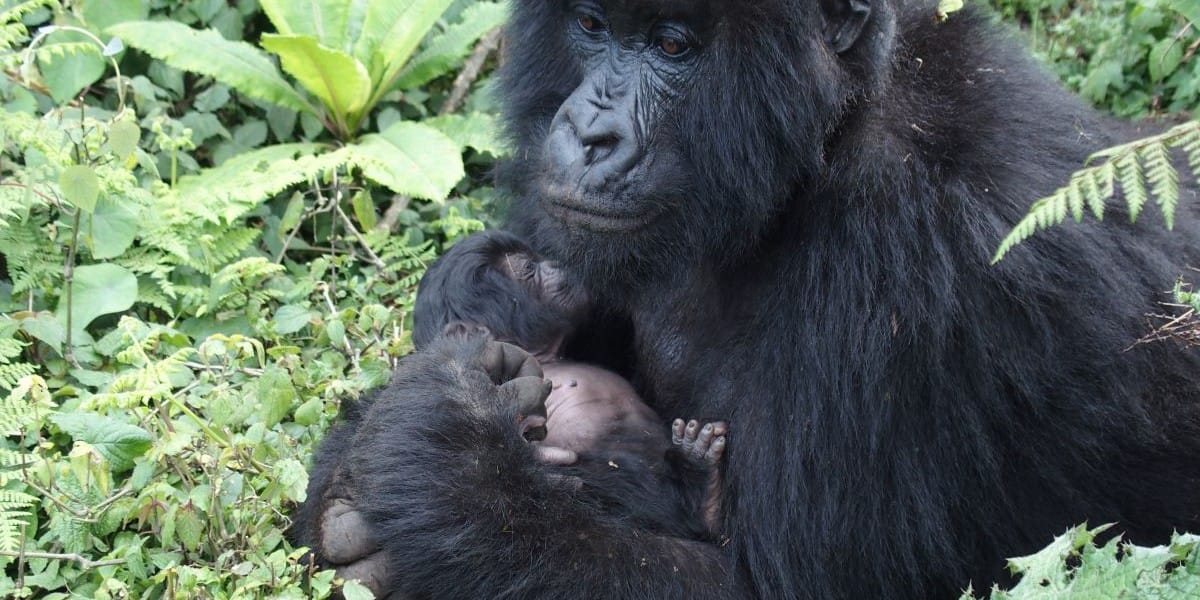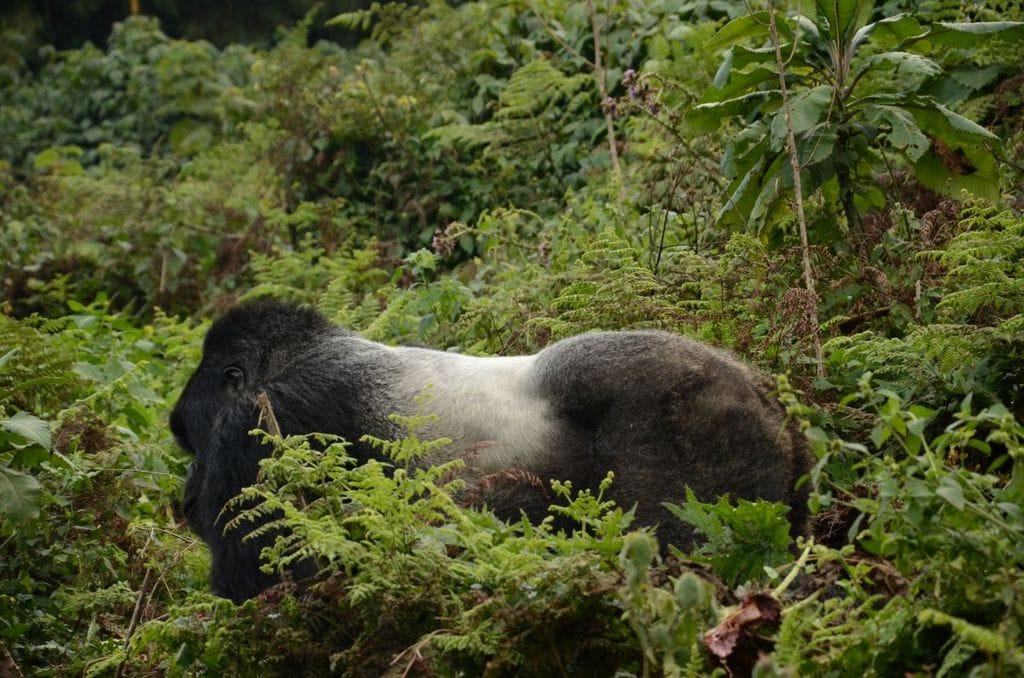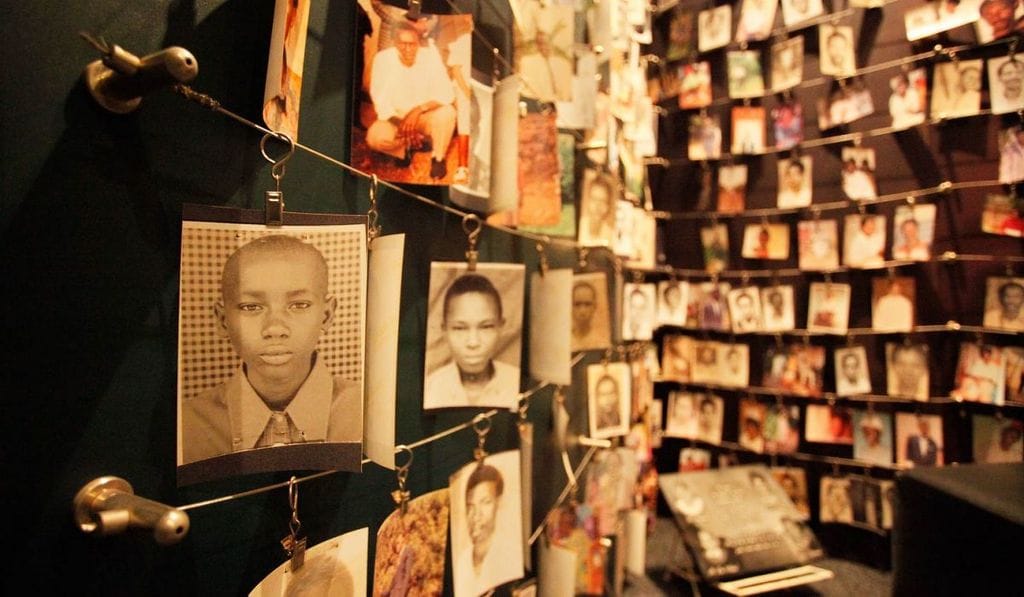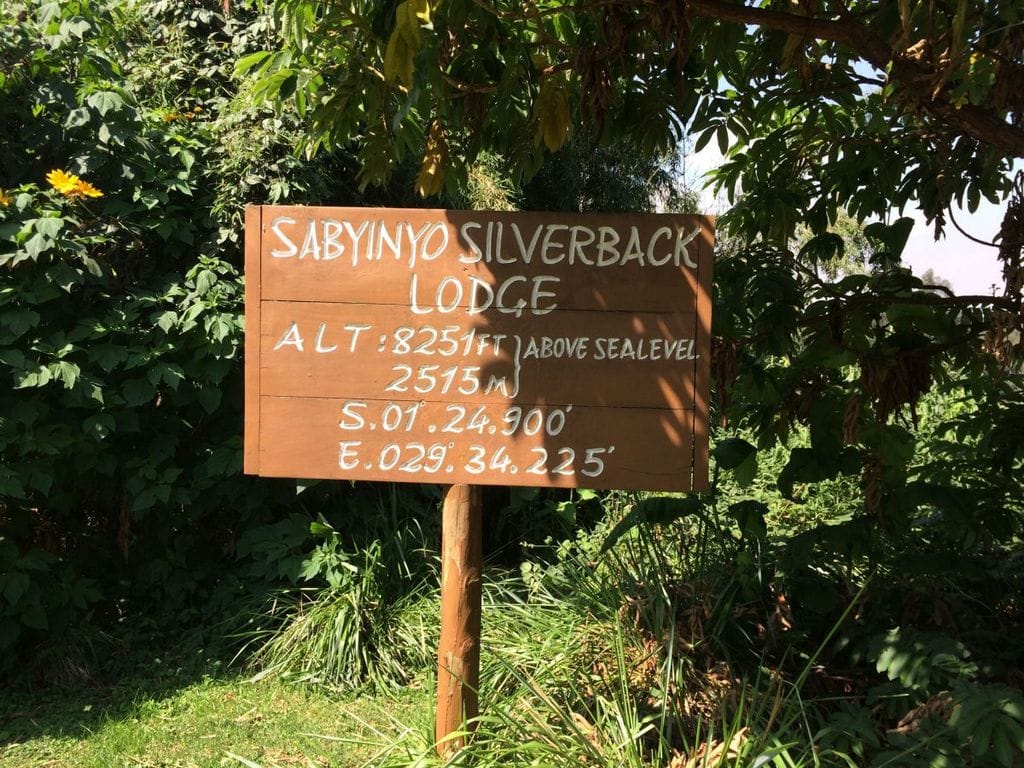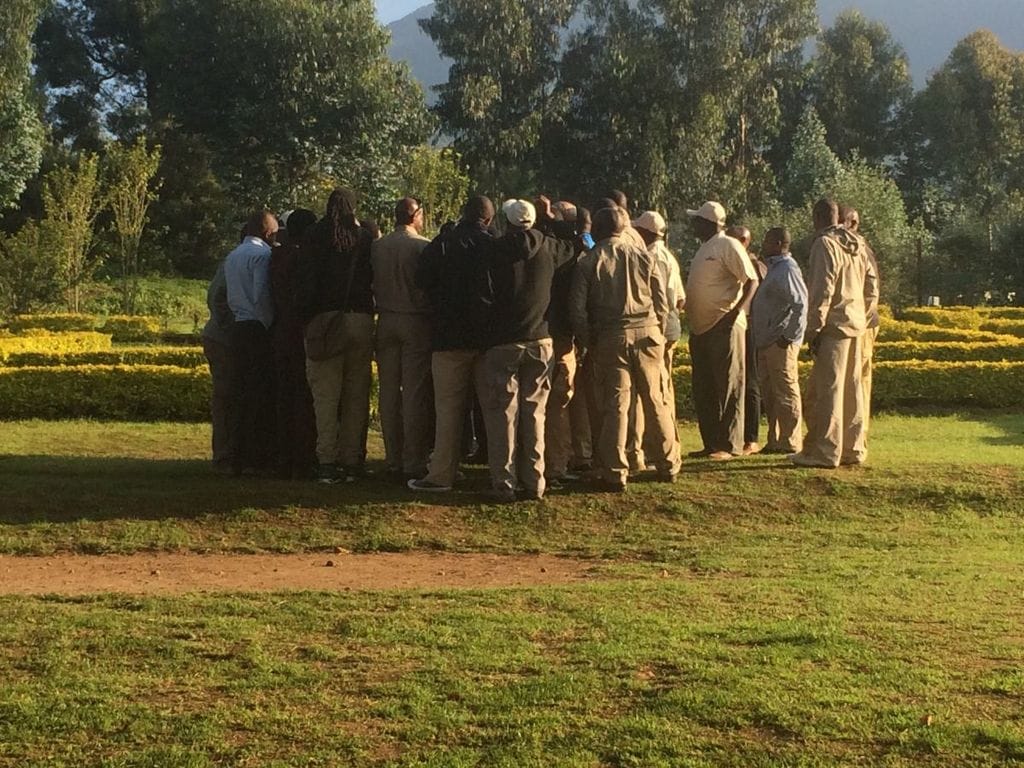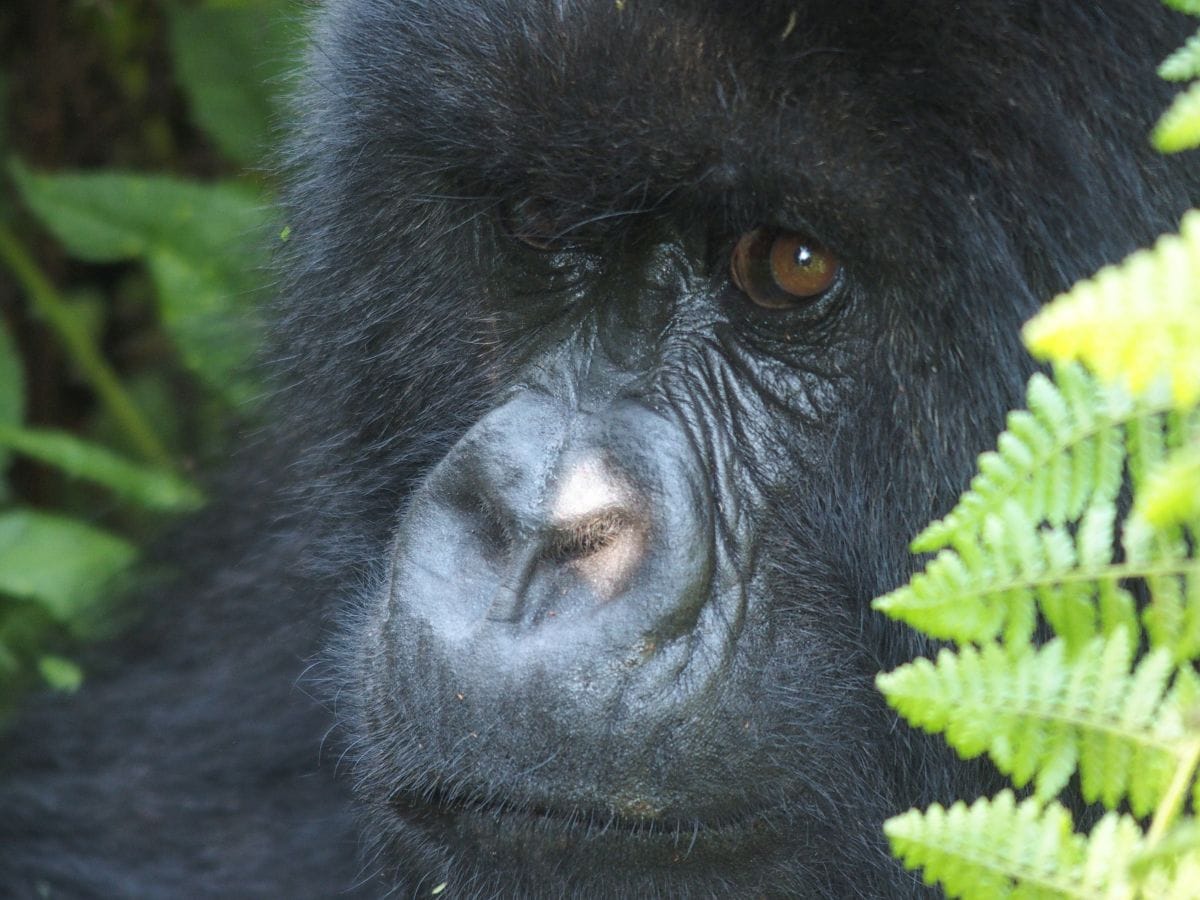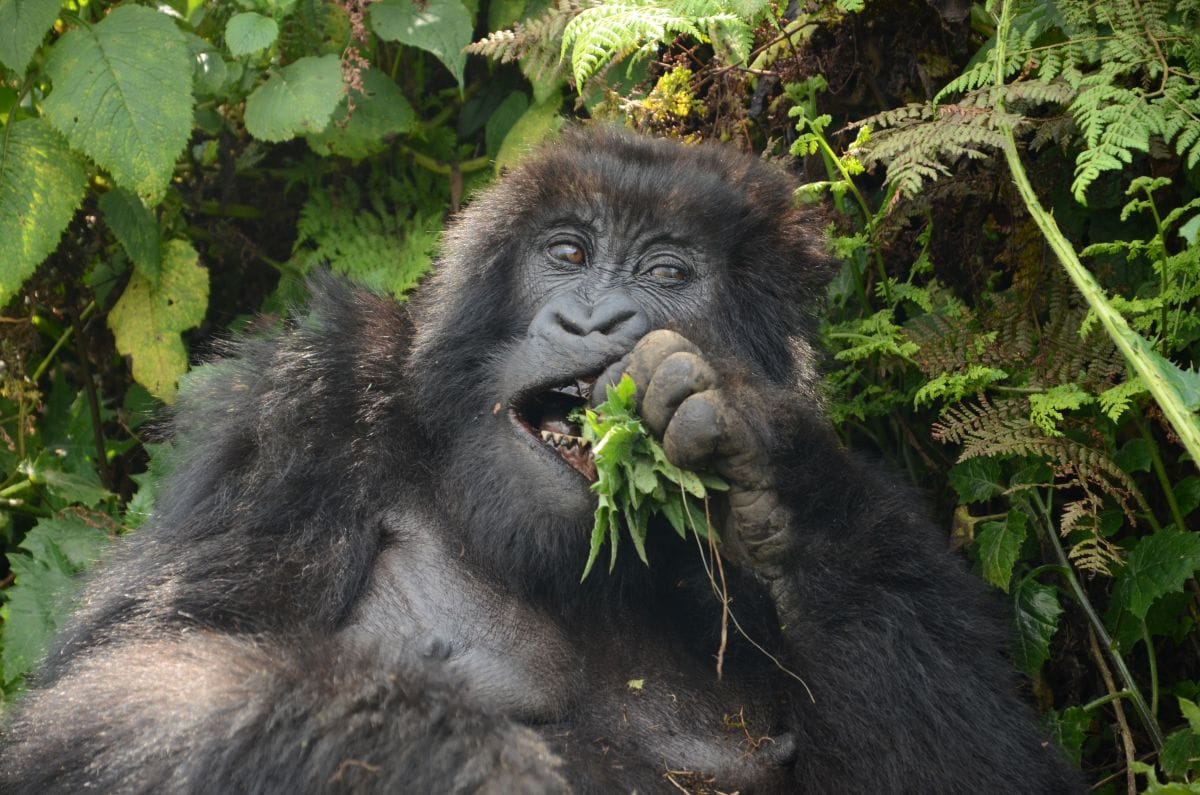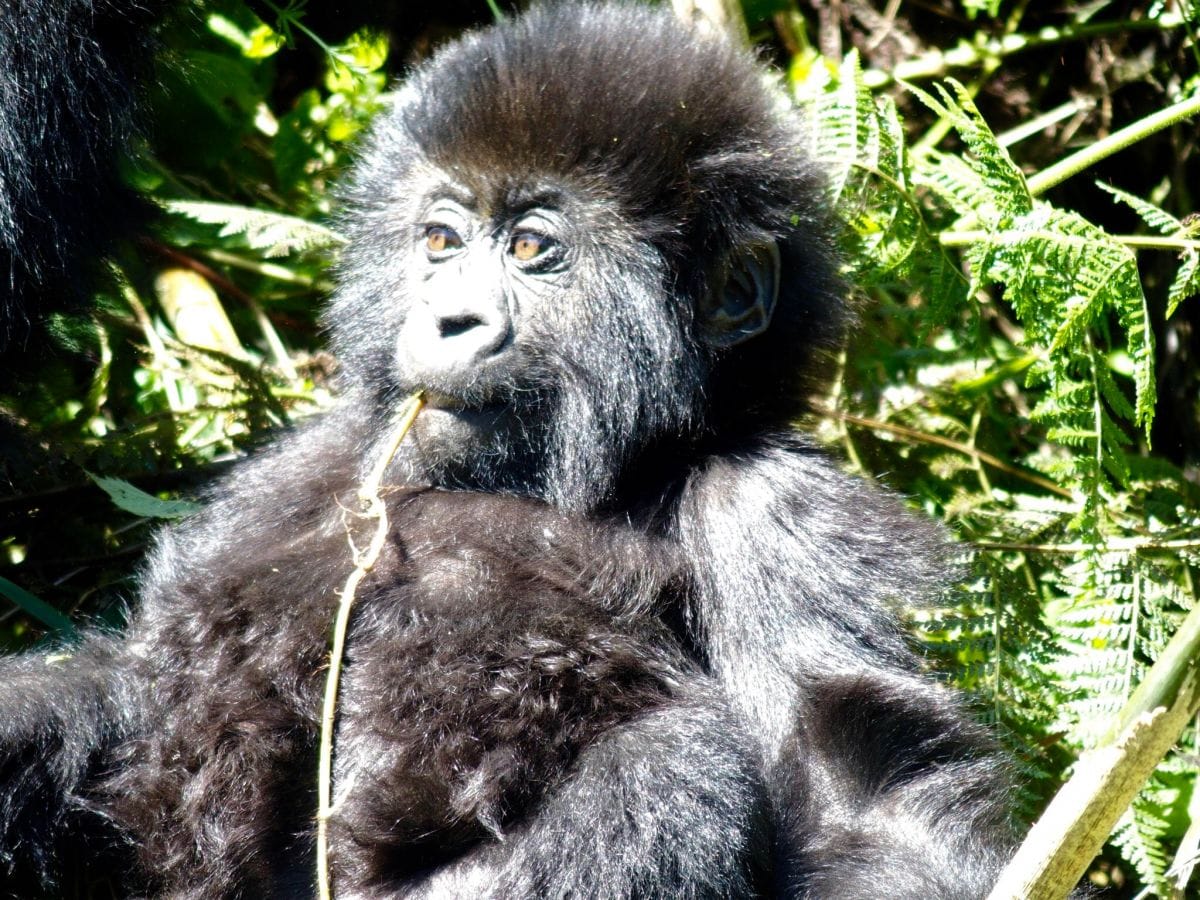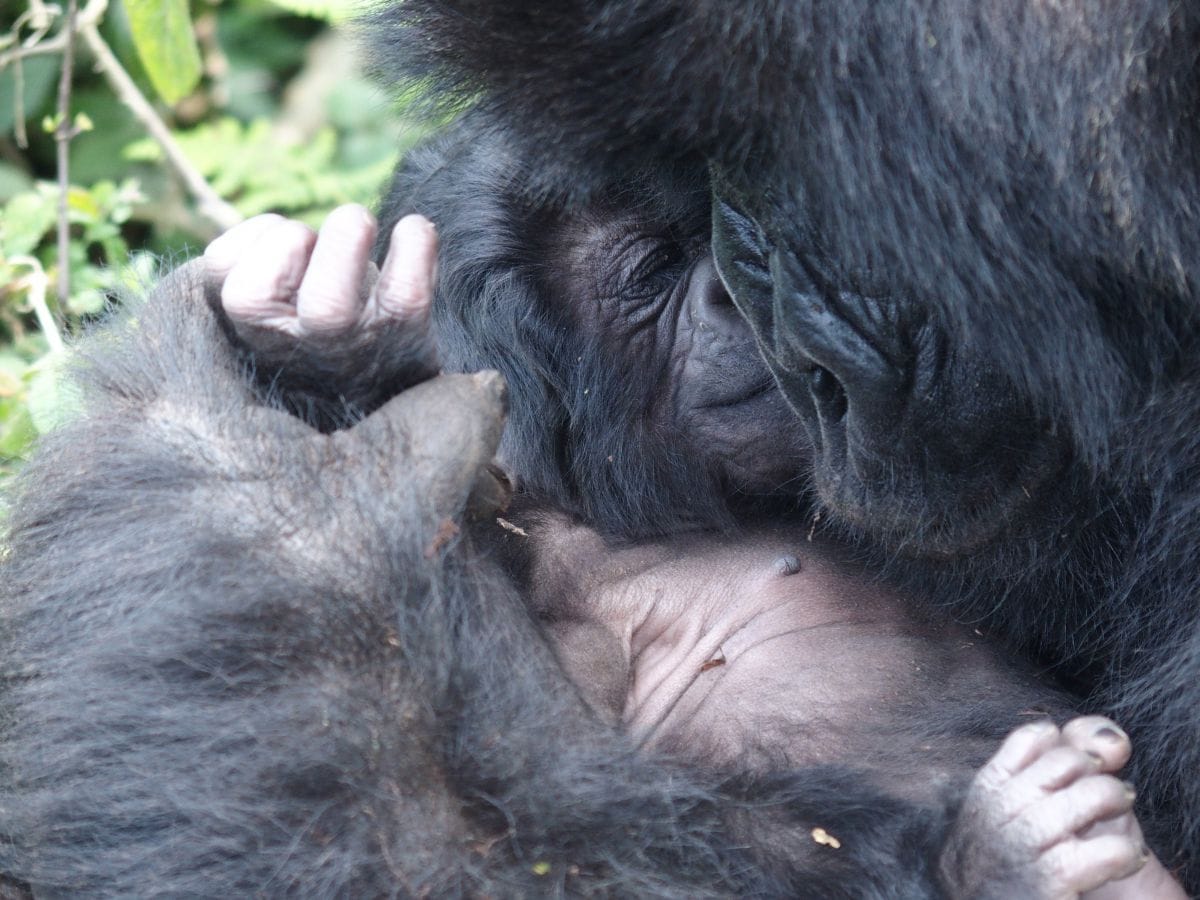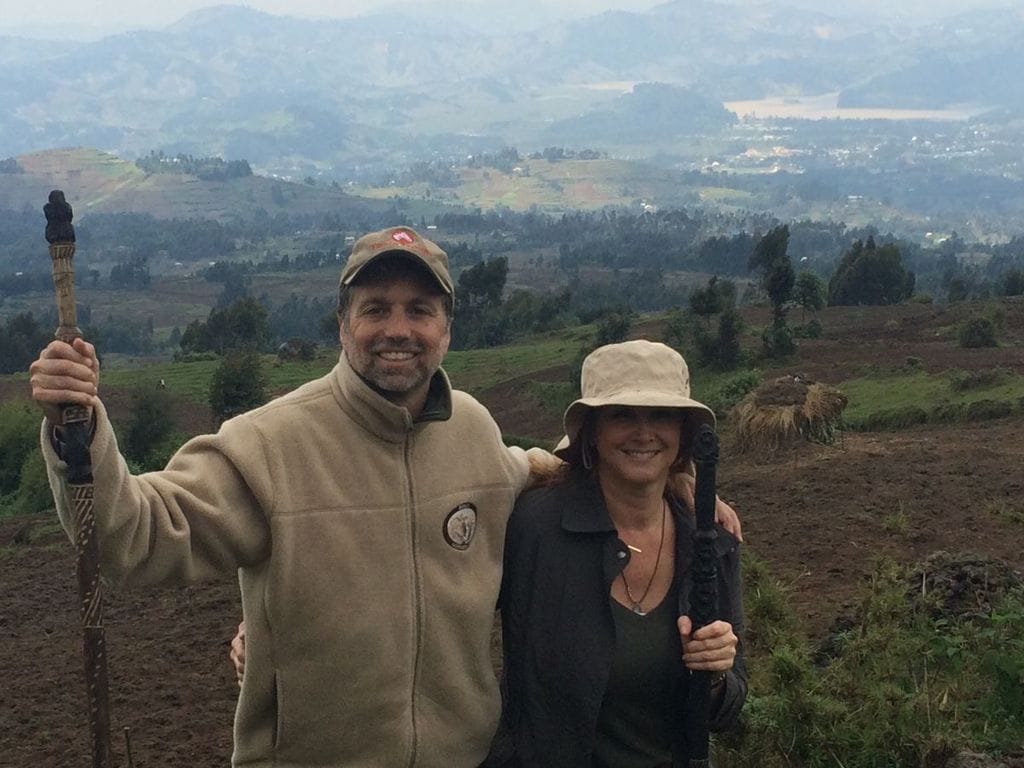Gorilla Trekking in Rwanda: Seeing the annual migration of wildebeest and gorilla trekking were two experiences I have been longing to do for a very long time. With our kids tucked away in sleep away camp, we had a short window of opportunity in July to do both during one trip before we had to return for visiting day. And as neither of us are not getting any younger, this was as good as time as any to do it.
The world’s last remaining gorillas, roughly 880 by recent count, reside in the Virunga Mountains – a triangle where Congo, Rwanda and Uganda and eight volcanoes intersect. Rwanda, known for the brutal genocide in the 90s, is now by far the most stable country, easiest to reach (and a quick flight from the Serengeti or Kenya) and most popular location to see the gorillas. Precisely, this is where 16 ‘families’ of 300 gorillas call home. Half of these are research groups (some studied by the famous researcher Dian Fossey featured in ‘Gorillas in the Mist’) while the remaining are tourist groups, able to be viewed under strict supervision for only one hour each day.
The fact that these critically endangered animals are still around is in fact one of the great success stories in wildlife conservation. While their population has now tripled since the 1960s, they are still extremely vulnerable. As they share 98% of our DNA, they are prone to our sicknesses – catching a human cold can wipe a whole family out. In Rwanda, tourism provides the necessary revenue to protect them and their habitats as well as provides employment to the local communities.
FIRST STOP: KIGALI
Most people save gorilla trekking for the last leg of a safari trip and thus take a short flight to Rwanda from locales in Kenya or Tanzania. As Volcanoes National park is a three hour drive up winding roads and cliffs ( ‘land of a thousand hills’), most people pit-stop overnight in Rwanda’s capital of Kigali (trust me you don’t want to drive up at night!). For us, it was an easy charter flight from our camp in the Serengeti into Kigali with one stop in Mwenza on Coastal Air for quick passport control.
The Kigali Serena Hotel is currently the best hotel to stay in Kigali. It is not necessarily remarkable but it offers comfort, high security and is seemingly the place where every foreign head of state and businessmen (foreign investment is very high and the level of development in Kigali is quite incredible) chooses to stay. Our stay in Kigali was worthwhile as it offered us time to visit the Genocide museum – an essential stop for anyone to understand the atrocities of the 100-day brutal mass murder of one million people in 1994. Embarrassingly, I knew very little about the depth of the genocide other than what I saw in the film ‘Hotel Rwanda‘. It was deeply moving reading different stories listening to the experiences of other people we met after our visit. As the genocide happened only twenty years ago, the wounds are still open and memories are still fresh. EVERYONE was impacted. But rather than resentment and anger we found forgiveness, friendliness and hope in each person we met.
Today you will find a country that has incredibly rebounded and is the most modernized city in the third world. I was quite surprised how clean and modern the city was – even the 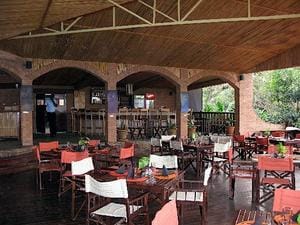 airport was impressive. Very different than Nairobi and Arusha. As you might expect, security is everywhere.
airport was impressive. Very different than Nairobi and Arusha. As you might expect, security is everywhere.
Before we started our ascent to the Volcanoes Mountains, we took a lunch break at Heaven – a gourmet restaurant owned by an American-expat Josh Ruxton, who wrote about their life in Rwanda in the excellent book, ‘A Thousand Hills To Heaven’. Eager to stop by after I read the book, Josh and his wife Alissa hospitably opened the restaurant (situated on an expansive deck launched up in the treetops) just for us to have a delicious lunch from its diverse menu. If you are in Kigali for the night, I highly recommend you stop here for drinks or dinner when the trees are lit up and they often have a band or movie playing.
OUR home: SABYINYO SILVERBACK LODGE
There are currently only two ‘high-end’ lodges in the Volcanoes National Park area I would recommend considering (a Wilderness Safaris upscale 12-room lodge, Bisate Lodge, is now open) – the Volcanoes Virunga Lodge and Sabyinyo Silverback Lodge. While both are excellent choices, I chose to book Sabyinyo, a member lodge of the Governor’s Camp Collection, as it is also owned by the African Wildlife Foundation (AWF), whom I work closely with in my own non-profit work. Both lodges donate a portion of the guest revenues towards gorilla conservation and communities living near the park.
The trip from Kigali to either lodge is a long and slow three-hour drive up winding roads passing through many villages and people incredibly trekking up for miles with mountainous piles of goods on their heads or bikes. There is apparently an option to take a helicopter to Sabyinyo’s heli-pad but it is rarely used. At 8,251 feet above sea level, expect your ears to pop a few times on the ride up.
Sabyinyo itself is in a primate location in the foothills of Volcanoes National Park (and only 15 minutes away from the park’s welcome center where you get assigned a gorilla family). Warning: once you arrive, it is a very steep walk up a path to get to the main reception. I have to admit our hearts were pounding on our walk up and we were worried how we were going to handle a trek. After experiencing both gorilla treks, this was the steepest! Needless to say, it makes for good exercise compared to a sedentary safari. The views from the lodge are stupendous – you have 360-degree open scenery of 15K feet volcanoes (and Mount Karisimbi which we would be climbing the next day) where the borders of Uganda, DRC and Rwanda converge. It is quite surreal knowing that the border of each country was only 15 miles away.
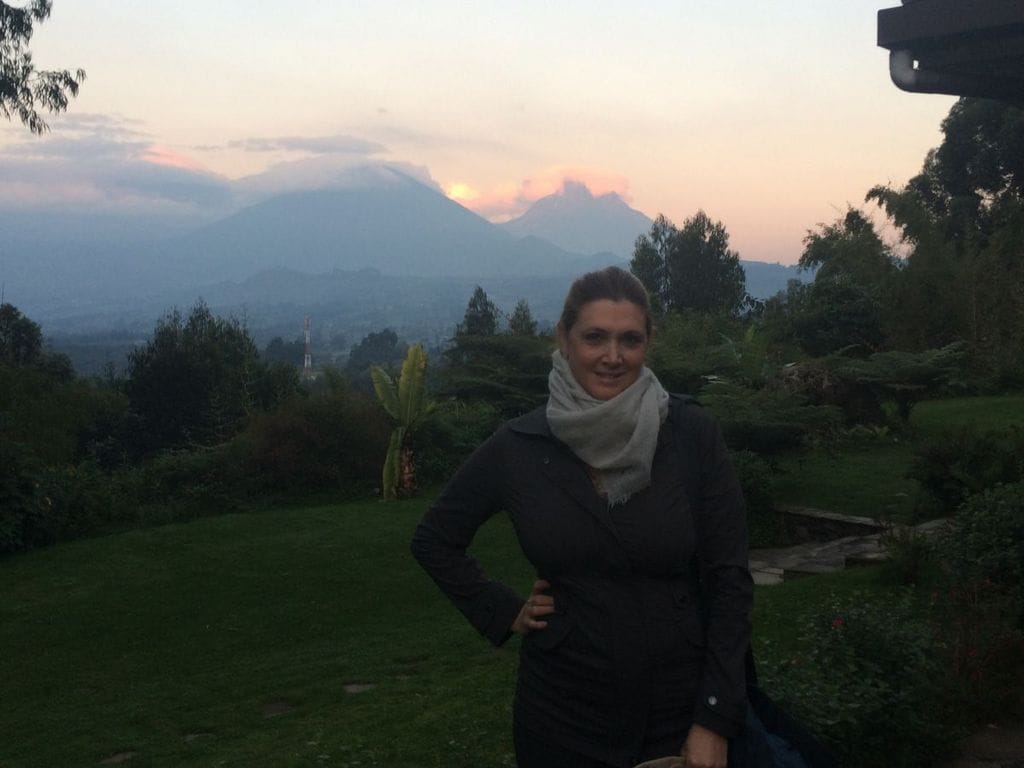
Sabyinyo is currently run by a wonderful young Kenyan couple, Thor and Alisa, who arrived at the lodge only a week earlier from their stint at Richards Camp in the Mara. Thor came through for us when unexpectedly our driver got in a car accident and we almost missed our second gorilla trek. We adored our assigned steward, Peter, who would welcome us each morning with much appreciated hot coffee, clean our boots each day after our treks and light a fire in our cottage before and after dinner each night.
All of the accommodations at Sabyinyo (5 stone cottages, 3 suites and one family suite) are generously sized, with fireplaces (ideal for chilly nights), walk-in closets and an oversized bathroom with double sink, tub and shower. Our cottage #6 was thankfully just a short walk from the main lodge. While spartan in decor, it was extremely comfortable and spacious with a sitting area facing a fireplace and a large king bed.
The main lodge, where guests mainly gather for cocktails, afternoon tea and meals, consists of a small lobby with large fireplace, a large lounge area, and dining room. All are appropriately rustic in decor (although the lounge could use an update) but you won’t spend much time here other then to eat and perhaps watch ‘Gorillas in the Mist’, which we did before our trek. The clientele during our stay was a mix of older couples and families with college-age kids – all coming from or going to other safari adventures.
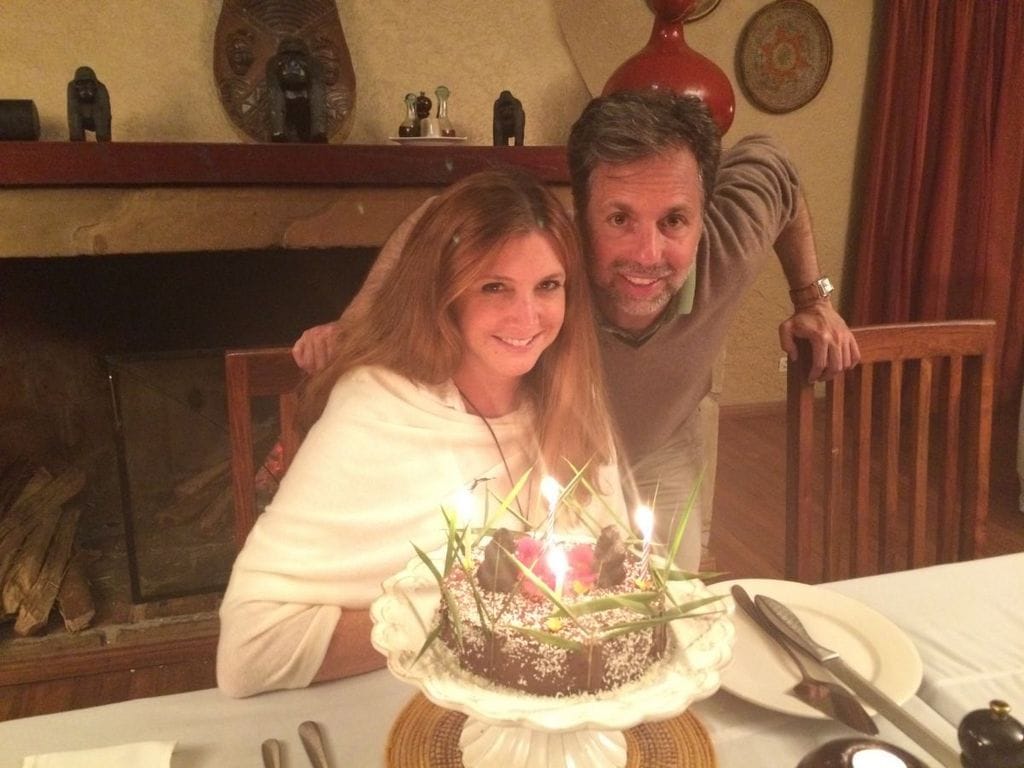
Our meals at Sabyinyo (included in your rate as is wine/alcohol) were quite good and locally sourced. I was delighted when the staff presented me with a ‘gorilla’ birthday cake our last evening, which we shared with all the guests. As wake up calls for treks are at 5:30 am, most guests are off to bed early. There is a flurry of activity at the lodge from 6 to 6:30 a.m. as you get dressed, are assisted with leg covers (to protect you from mud and those nasty nettles) and have breakfast. By 6:30 am, the lodge is emptied as everyone departs to get assigned their groups and make their treks.
Note: Sabyinyo (like Mara River Camp) is an eco-lodge that uses solar power for energy and a generator in the evenings. Low impact means you sacrifice a few things to be kind to the environment. Lights may go on or off during dinner or hot water may take five minutes – be patient! Wifi is available but admittedly better in the main lodge than in the rooms.
NOW, TO THE GORILLAS and Gorilla Trekking
Everyone is here to see the gorillas. Here is how it works:
- At 6:30 am, trekkers arrive at the Park’s welcome center. You or your driver checks you in with your permit (see Tips below – you must get these way in advance as only 64 permits
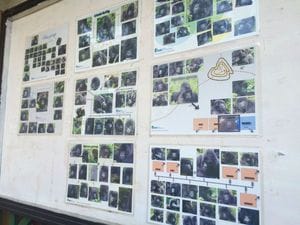 are allocated to view the gorilla families each day – no exceptions.) and then for about 30 minutes, you mill around with the other trekkers, have some coffee and learn about the different gorilla families (below).
are allocated to view the gorilla families each day – no exceptions.) and then for about 30 minutes, you mill around with the other trekkers, have some coffee and learn about the different gorilla families (below). - Finally, the guides huddle for their assignment. Age, fitness, number of people in your party, whether it is your first or second trek – all of these factors are taken into account in determining what family you are assigned. So is any handicaps – we actually saw one person on a stretcher being hoisted up the mountain. You can put a request in advance for an ‘easier’ group (shorter trek) like we did, but it’s a pure waste of time as we were about to learn.
- Gorilla groups are segregated by ‘easy’, ‘middle’ to ‘long’ based on where the families were last identified by trekkers and how steep the climb is to reach them. As families are constantly moving, an ‘easy’ family can take several hours to find and vice-versa. It is pure luck.
- Your hike could last anywhere from one hour up to several hours, depending on the above and how fit your group is. If one person needs to take a break, you all have to wait. And you need to factor in which mountain your gorilla family resides. Some are closer than others. A mountain can be an hour drive away, before you even get out of your car. Depending on all this, you can be back to your lodge as early as noon or as late as after dinner.
Having heard about stories of five-hour hikes and altitude adjustments (not to mention possessing a healing broken toe), I put in multiple requests beforehand for an easy group our first day. I should have known when our driver walked towards us with a weak smile announcing our assignment to the ‘Susa’ family and the muttered responses by our guides about how hard or long the 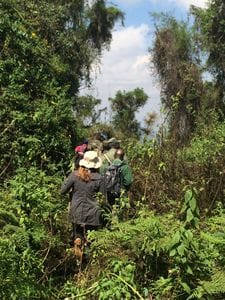 trek would be, that we were not going to be accommodated with our request. Little did we know until we arrived back at our lodge in time for dinner that we were assigned the most difficult group of all of the groups to access. Evidently, we were the only ones unaware of the group’s reputation. All we had to say was ‘Susa’ to the other guests (all who were back by 2 p.m. for afternoon tea, I might add) to solicit sympathetic knowing remarks.
trek would be, that we were not going to be accommodated with our request. Little did we know until we arrived back at our lodge in time for dinner that we were assigned the most difficult group of all of the groups to access. Evidently, we were the only ones unaware of the group’s reputation. All we had to say was ‘Susa’ to the other guests (all who were back by 2 p.m. for afternoon tea, I might add) to solicit sympathetic knowing remarks.
Unsuspecting (but slightly suspicious as we were the only two trekkers for the Susa group) we went with the flow. The longest part of getting to the Susa group – a large family of 25 gorillas (many of them newborns) overseen by an imposing silverback Kurira and second-in-line Igisha – is the drive to the mountain where they reside, the farthest of any of the other gorilla groups. After an hour and half drive through very rocky terrain and villages (more African massage!), we arrived at the foothills of the mountain. Then, after a 40-minute hike up to the park entrance itself, we started our 2-hour trek upslope in a dense bamboo forest lead by one guide wielding a machete to make a path to find the moving group. Admittedly, we started to get nervous – as it was just the two of us with the guides in the middle of a dense forest in Rwanda – with stupid thoughts going through our heads of being stranded. I recall my husband at one point losing his patience, having a New York moment (‘cut the b-s, how much longer?!) and thinking of turning around.
I am glad we didn’t. When you finally have that moment – when you first catch your first sight of a gorilla in the wild – only a foot away from you – it’s the most amazing ‘hold your breath’ experience. Your journey there becomes irrelevant. Its the most glorious hour and ‘privilege’ to be sitting in this remote wilderness amongst these gentle animals who are alive against all odds. I was mesmerized watching the mothers and their babies, Silverback Kurira 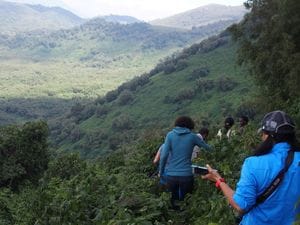 beating his chest, the soft grunting back and forth (and not just from the gorillas) and looking into the beautiful eyes of different members of the family. If I wasn’t so worried about getting enough pictures on my camera, I would have enjoyed it more.
beating his chest, the soft grunting back and forth (and not just from the gorillas) and looking into the beautiful eyes of different members of the family. If I wasn’t so worried about getting enough pictures on my camera, I would have enjoyed it more.
Our second day of gorilla trekking, the guides took pity on us and gave us an easier group to access (2nd day trekkers usually get easier treks the next day in general) – the fittingly named Sabyinyo group. This 19-member group contains the oldest living Silverback, Gohunda, at 44 years old, and is also the original group that Dian Fossey researched. We appreciated the more gentle climb through the forest – it was only a 30-minute hike to reach our group this time. Relaxing on a cliffside against dramatic views, we watched a mother cradle her 8-day old baby a few inches away and got closer views of one of the elusive silverbacks (not the chief Gohunda but the ‘prime minister’, as our guides called him). As we were with six people for this trek, all on their first trek and jockeying to get the best photo angles, we were able to better appreciate our ‘private’ tour the day before. With the Sabyinyo group, we were able to just take it all in without the pressure to have our camera on at all times.

It took a few days after our return home and seeing our camera images on screen for us to take our experience all in and fully appreciate these endangered creatures so similar to us not just in DNA but in other characteristics: their intelligence, complex range of emotions, expressions and family-orientation. It dawned on me that they embody so many of the same remarkable traits that draw me to elephants. They possess all of our good traits but none of our bad.
Learn more about the Gorilla Doctors and other wildlife conservation programs we support here.
| Loved | Didn't Love |
|---|---|
|
|
| Don't Miss | Skip |
|
|
| Rooms to Get | Tips |
|
|

